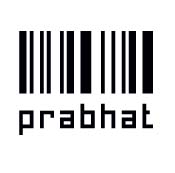The Internet long escaped the desktop and moved onto the mobile phone. The problem is that it has been following a similar learning curve that took us from 300 baud telephone modems to DSL & Cable broadband and now to high speed wireless and fiber optic service. Mobile bandwidth is undergoing a steady evolution, with the demand for higher and higher speeds pushing the technology. Let’s have a look at what’s available and what’s coming soon.
The benchmark today is 3G wireless. This service offers somewhere between 500 Kbps and 1.5 Mbps and is owned and operated by the cellular carriers. The same company that sells you your cell phone minutes also sells you 3G wireless Internet access. The signals come from the same towers, so if you are in a dead spot for phone reception you won’t be surfing the Web or watching videos either.
The 3G build-out has been proceeding at something of a panic level, especially since the introduction of the Apple iPhone. The first iPhone used the AT&T EDGE network, which is actually called a 2.5G network. That means it has considerably less bandwidth than the newer HSPA or High Speed Packet Access 3G network, perhaps as little as a tenth as much. HSPA is offered by GSM carriers AT&T and T-Mobile and is also known as HSUPA.
In India 3G service is provided by the Leader BSNL. In USA competing 3G service is also offered by CDMA carriers Verizon and Sprint using a different technology. Theirs is known as EV-DO and EV-DO Rev A. Download bandwidths are in the range of 1 to 2 Mbps, depending on signal conditions.
Note that 2.5G and 3G cellular broadband not only gives cell phones the ability to download videos and surf the Web but also gives you the option of adding 3G to your laptop computer. The functionality is added using a plug-in wireless modem aircard. These are sold with data-only service plans, since they don’t work as telephones. The aircard and wireless service has been a boon to field sales people who don’t always have the ability to set up shop within a WiFi hotspot.
The newest service on the market is called 4G mobile bandwidth. Right now the run away leader is the WiMAX service offered by Clearwire and Sprint under the CLEAR trademark. WiMAX is yet another wireless standard, albeit a global one not associated with the cellular phone system. WiMAX offers a powerful signal that covers an entire city. It’s strong enough to penetrate buildings so that you can have the same WiMAX broadband on your desktop and laptop computers. Download bandwidth typically ranges between 3 and 6 Mbps, considerably faster than 3G networks.
The 3G build-out has been proceeding at something of a panic level, especially since the introduction of the Apple iPhone. The first iPhone used the AT&T EDGE network, which is actually called a 2.5G network. That means it has considerably less bandwidth than the newer HSPA or High Speed Packet Access 3G network, perhaps as little as a tenth as much. HSPA is offered by GSM carriers AT&T and T-Mobile and is also known as HSUPA.
In India 3G service is provided by the Leader BSNL. In USA competing 3G service is also offered by CDMA carriers Verizon and Sprint using a different technology. Theirs is known as EV-DO and EV-DO Rev A. Download bandwidths are in the range of 1 to 2 Mbps, depending on signal conditions.
Note that 2.5G and 3G cellular broadband not only gives cell phones the ability to download videos and surf the Web but also gives you the option of adding 3G to your laptop computer. The functionality is added using a plug-in wireless modem aircard. These are sold with data-only service plans, since they don’t work as telephones. The aircard and wireless service has been a boon to field sales people who don’t always have the ability to set up shop within a WiFi hotspot.
The newest service on the market is called 4G mobile bandwidth. Right now the run away leader is the WiMAX service offered by Clearwire and Sprint under the CLEAR trademark. WiMAX is yet another wireless standard, albeit a global one not associated with the cellular phone system. WiMAX offers a powerful signal that covers an entire city. It’s strong enough to penetrate buildings so that you can have the same WiMAX broadband on your desktop and laptop computers. Download bandwidth typically ranges between 3 and 6 Mbps, considerably faster than 3G networks.





0 comments:
Post a Comment